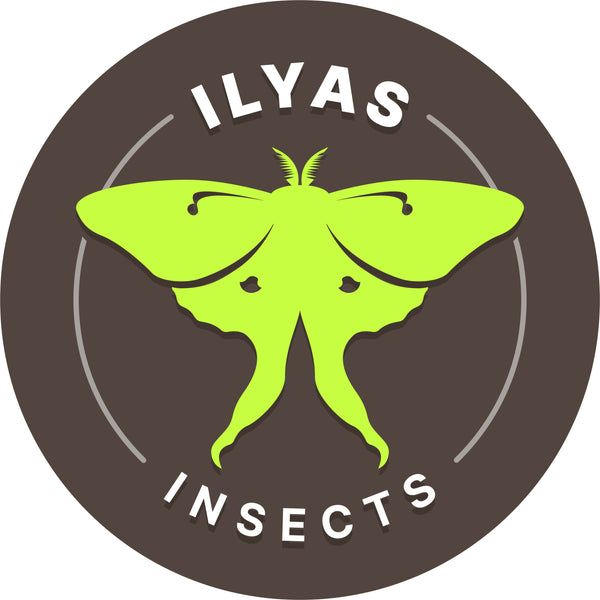Ilyas Insects
Vestria sp Green & Blue
Vestria sp Green & Blue
Couldn't load pickup availability
Vestria sp. "Green & Blue"
Basic caresheet
Common name
Rainbow predatory katydid
Origin
East Peru
Adult size
Females: up to 5 cm
Males: 4 to 4.5 cm
Temperature & humidity requirements
24 to 28 °C
70 to 80% humidity
Feeding source
Not as strongly predatory as some other katydids, but still requires suitable live prey
Accepts crickets, red runner roaches and similar prey items
Additional foods: aquarium fish flakes, apple, zucchini, banana, mango (always pesticide free)
Best results when offering both prey and soft fruit
Housing requirements
Plastic or glass terrarium with a well-ventilated lid
Best substrates: coconut fiber or sphagnum moss
This species hides under leaves of plants such as Pothos, so provide a live or artificial plant
Requires high humidity combined with good ventilation
Mist every 2 days with chlorine-free water at dusk
Breeding guidelines
Both sexes should be well fed to avoid cannibalism and should be at least 3–4 weeks into adulthood
House the adult pair in a well-planted terrarium (not a cage) with plenty of food available
Females lay eggs on humid peat moss blocks, wood or humid floral foam (best success reported with floral foam)
Females bite the foam before laying eggs – bite marks confirm oviposition
Egg laying and mating occur mostly at night, so provide a proper dark period
Eggs hatch in 10 to 11 weeks
Nymphs can be kept in groups up to L2 stage, but should be separated later to avoid cannibalism
Young nymphs, especially L1–L2, need frequent misting – every evening is ideal
Egg incubation guidelines
Eggs laid in host plants can be left there to hatch naturally
If eggs are purchased or removed, follow this procedure:
-
Use a plastic container with a perforated lid (not too many holes, to avoid losing humidity too quickly).
-
Place 2–3 layers of kitchen paper towel at the bottom, mist until evenly moist (not soaked).
-
Check every 2 days to ensure the paper remains moist but not dried out.
-
Replace paper towels weekly to prevent mold or bacterial growth.
Share




